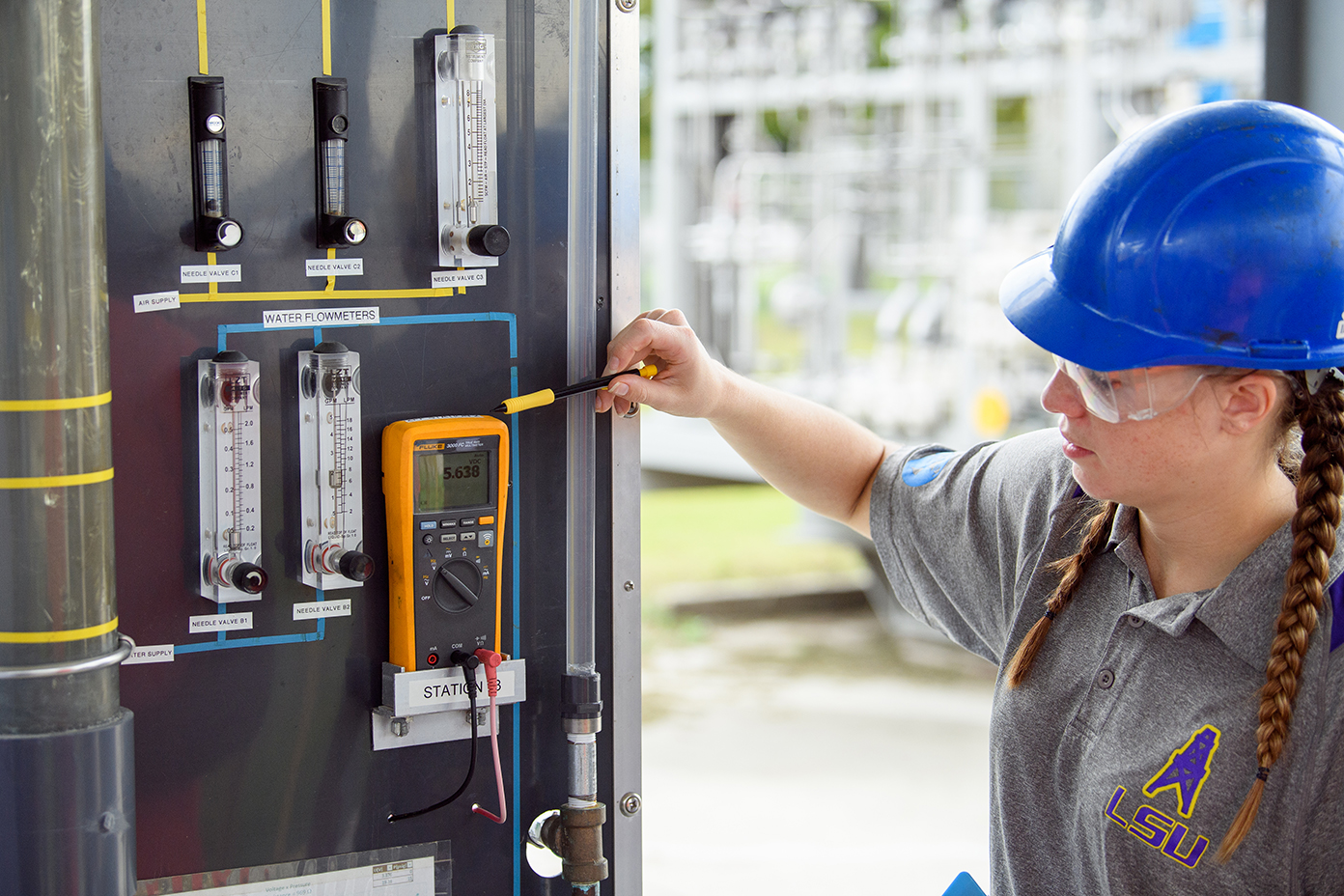LSU PERTT Lab Reopens in Sections, More Work to Be Done
 September 24, 2018
September 24, 2018
BATON ROUGE, LA – As work continues on the renovation and enhancements to the LSU Petroleum Engineering Research and Technology Transfer, or PERTT, Laboratory, parts of the facility have come back online this fall.
Recently, the area designated as the outdoor classroom for the Production Lab course was updated and made ready for the 100 students enrolled this fall. Another, larger portion of the PERTT Lab will be prepared later in the year, once all final safety systems and experiments are fabricated.
“Seeing students in the new location for the Field Operations Laboratory is exciting, because it’s the first concrete step in reopening the lab after a series of necessary renovations and updates,” said LSU Craft & Hawkins Department of Petroleum Engineering Chair Karsten Thompson. “We expect our first industry customer to be performing testing in Well No. 1 later in September and look forward to getting fully back in business as other parts of the lab come online through the rest of the fall semester and in early 2019.”
Work began two years ago on replacing old equipment, making improvements and ensuring the facility was compliant with current safety standards. Then in late 2017, Wesley Williams, LSU Petroleum Engineering professional-in-residence and co-director of the PERTT Lab, and his team were awarded a $4.9 million grant by the National Academy of Sciences, Engineering, and Medicine’s (NASEM) Gulf Research Program for the project, “Experiments on Multiphase Flow of Live Muds in a Full-Scale Wellbore With Distributed Sensing for Kick and Gas-in-Riser Detection/Mitigation.”
The team is comprised of Williams and LSU Petroleum Engineering Professors Babak Akbari, Mauricio Almeida, Yuanhang Chen and Paulo Waltrich.
Their research, done in conjunction with Texas A&M University and Weatherford, focuses on gaps in understanding about the behavior of riser gas under high temperature and pressure. Testing, which is taking place at the PERTT Lab, requires using an existing well retrofitted with pressure and temperature sensors to produce data for validating riser gas models that inform design of pressure barriers and techniques for preventing uncontrolled hydrocarbon releases.
In order to conduct the experiments, however, more work is needed on the facility. The end result, Williams said, will make the PERTT Lab a popular destination for a variety of audiences.
“Our goal for this project was to make a permanent piece of infrastructure that the NAS Gulf Research Program could point to as a premier place where oil and gas research will be performed well into the future,” Williams said. “It will provide a highly instrumented well and support facility as a ‘playground’ for industry, government, and academia to test their equipment and ideas in a safe and controlled environment.”
About the PERTT Lab
The LSU PERTT Lab provides a versatile research environment for performing multiphase flow experiments on field-scale tubulars at high pressures. It is an industrial-scale facility, having full-scale equipment and instrumentation for conducting research related to petroleum technology. Originally, PERTT assembled most of its equipment for blowout prevention and well control research and training activities. Today, it continues to build on its legacy of drilling instruction and research excellence while expanding into production and surface operations teaching and research. The facility also serves as the go-to well proving ground for major operators like Shell, BP, Chevron, and many others.
Like us on Facebook (@lsuengineering) or follow us on Twitter and Instagram (@lsuengineering).
###
Contact: Joshua Duplechain
Director of Communications
225-578-5706 (o)